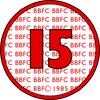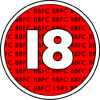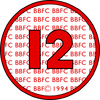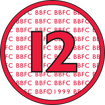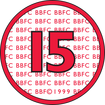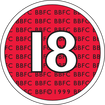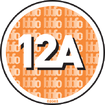Main logo
1912–2000
Template:Missing former logo
2000–2013
2013–present
Ratings
1913–1970
At first, there were just two advisory certificates. In 1932, an H (Horrific) certificate was added to alert parents to horror-themed material. In 1951, a compulsory certificate, X, was introduced allowing only those aged 16 and older to enter. This replaced the H certificate.
1970–1982
On 1 July 1970 the A certificate was split into two: the A certificate now allowed those aged five and older to be admitted, but warned parents that they may not wish children under 14 to watch the film, while the new AA allowed only those aged 14 or over to be admitted. As there was now a mandatory certificate at 14, the X certificate was modified to raise its age from 16 to 18. The classification symbols were given a more modern look, replacing the ageing logos that had served the BBFC for almost 60 years.
1982–1985
UBBFC82-85.png|Universal PGBBFC82-85.png|Parental Guidance 15BBFC82-85.png|15 18BBFC82-85.png|18 R18BBFC82-85.png|Restricted 18 </gallery> On 1 November 1982 the ratings system was completely overhauled with only the U certificate remaining unchanged (though its description was slightly modified). The A certificate was replaced by PG, which was now completely advisory. The age of AA was raised a year and the certificate was renamed 15. The X certificate was unchanged but renamed 18 due to the lewd reputation that the letter X had acquired. A new R18 certificate was introduced for sexually explicit films. In order to show R18 films, cinemas must be licensed members-only clubs (previously, a loophole allowed these clubs to show such films unrated).
1985–1989
The Video Recordings Act 1984 gave the BBFC the legal responsibility to rate all videos. The current certificates were all used and were also modified and coloured. A new Uc certificate was introduced for videos only to indicate a recording that is especially suitable for young children to watch on their own. Those under the age of a certificate could not buy or rent a video with that certificate. Shops wishing to sell or rent R18 videos had to apply for a licence.
1989–2002
Due to the large gap between PG and 15 and industry pressure regarding Batman, a 12 certificate was introduced on 1 August 1989. However, it was for cinema use only and did not cover videos. 12 films released on video would typically be classified 15, though they were sometimes edited to fit the PG category. All of the symbols were also graphically edited. The 12 certificate was also introduced for videos on 1 July 1994.
1999–2002
In 1999, the symbols were slightly altered. There were used in tandem with the 1989 symbols.
2002–present
In September 2002, the symbols were refreshed again.
- The cinema 12 certificate was modified and renamed 12A. Those under 12 could now be admitted to 12A films, provided that they were accompanied by an adult aged at least 18 years old, although the BBFC recommends that 12A films are generally unsuitable for children under 12 years old. Contrary to popular belief, the certificate was not introduced for the film Spider-Man, the first film to receive it was actually The Bourne Identity. However, Spider-Man and other films still on general release at the time were reclassified as 12A.
- Introduction of the 12A followed two years of consultation and a trial period in Norwich, during which time the certificate was known as PG-12. The video 12 certificate remained unchanged.
- Shortly after the new certificate was introduced, all of the symbols were graphically modernised but retained all their main features (colour, shape, etc.).
As of 2009, the Uc certificate was retired, and replaced with BBFCInsight, which states where works are 'particularly suitable for pre-school children', although media released before the removal of the rating can still carry it.














